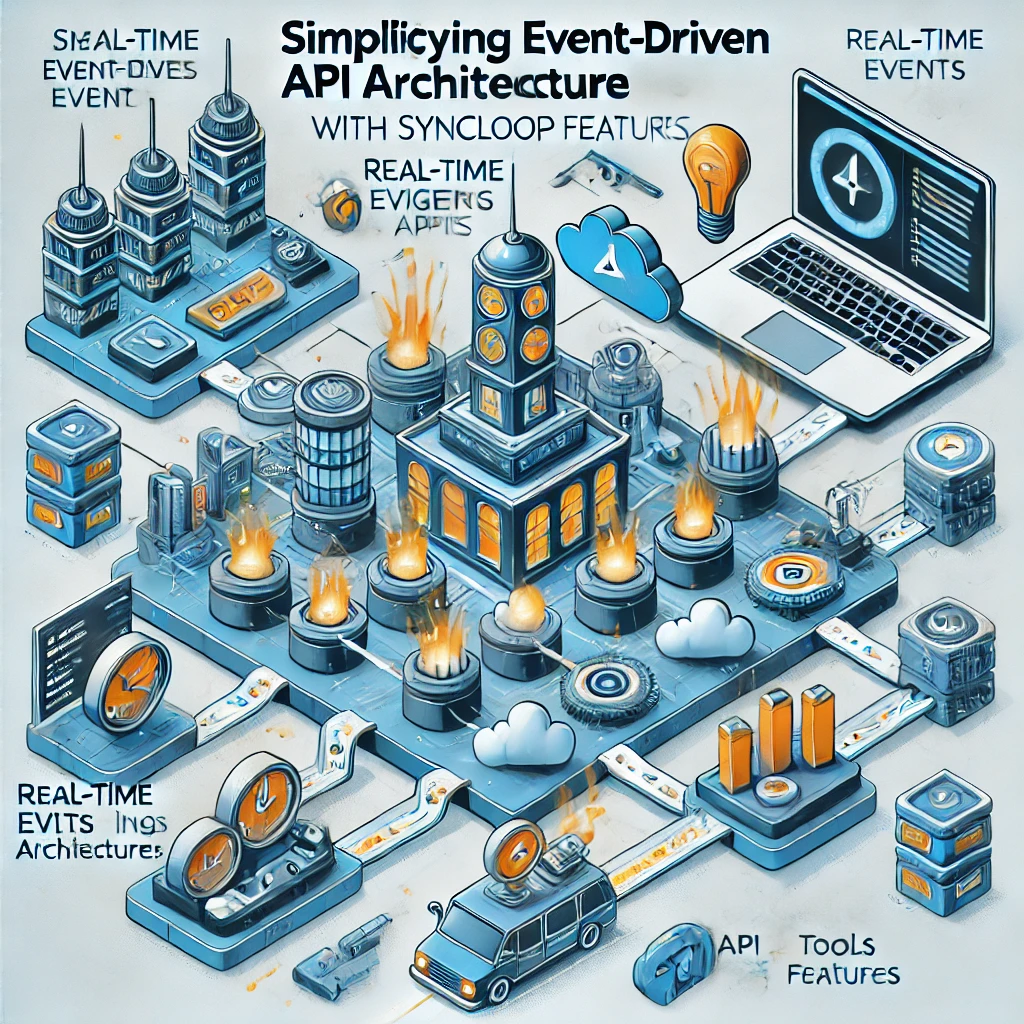Simplifying Event-Driven API Architectures with Syncloop Features

Syncloop provides powerful tools to simplify the development and management of event-driven API architectures. With features like dynamic workflows, real-time monitoring, and automation, Syncloop streamlines event processing while ensuring reliability and scalability. This blog explores how Syncloop simplifies event-driven API architectures and provides best practices for implementation.
The Importance of Event-Driven API Architectures
Event-driven architectures empower APIs to:
- Respond in Real-Time: Trigger actions immediately based on user interactions or system events.
- Enable Decoupling: Reduce dependencies between services by using events for communication.
- Enhance Scalability: Handle growing workloads efficiently with asynchronous processing.
- Improve Resilience: Minimize failures by isolating components and enabling retries.
- Support Complex Workflows: Automate multi-step processes triggered by specific events.
Challenges in Event-Driven API Architectures
- Event Processing Latency Ensuring minimal delays in handling and responding to events.
- Error Handling Managing failures or missed events without compromising system reliability.
- Scalability Supporting increasing event volumes as applications grow.
- Workflow Complexity Orchestrating multi-step processes triggered by events.
- Monitoring and Debugging Gaining visibility into event flows and identifying bottlenecks.
How Syncloop Simplifies Event-Driven Architectures
Syncloop provides robust features to overcome these challenges:
- Dynamic Workflows Design flexible, event-triggered workflows for real-time automation.
- Real-Time Event Processing Handle high-throughput event streams with low-latency processing.
- Error Handling and Retries Automatically retry failed events and implement fallback mechanisms.
- Event Aggregation Combine events from multiple sources to create unified workflows.
- Scalable Architecture Support high event volumes with dynamic scaling and load balancing.
- Monitoring and Alerts Track event flows, identify anomalies, and send notifications for critical issues.
- Integration with Messaging Systems Seamlessly connect with messaging platforms like Kafka, RabbitMQ, or AWS SNS/SQS.
Steps to Build Event-Driven API Architectures with Syncloop
Step 1: Define Event Sources
Identify the sources of events for your architecture, such as:
- User interactions (e.g., button clicks, form submissions).
- System-generated events (e.g., database changes, IoT device updates).
- External triggers (e.g., third-party API calls or notifications).
Step 2: Design Event-Triggered Workflows
Use Syncloop’s workflow tools to:
- Define triggers for specific events (e.g., order placed, payment received).
- Automate downstream actions like notifications, data updates, or API calls.
- Incorporate conditional logic for complex workflows.
Step 3: Implement Real-Time Event Processing
Leverage Syncloop to:
- Process events asynchronously to minimize delays.
- Use message queues to buffer events during traffic spikes.
- Apply filtering and transformation rules to prepare events for downstream workflows.
Step 4: Handle Errors and Retries
Configure Syncloop’s error handling features to:
- Retry failed events automatically with exponential backoff.
- Route failed events to dead-letter queues for further analysis.
- Trigger fallback actions to maintain workflow continuity.
Step 5: Scale Workflows Dynamically
Enable Syncloop’s dynamic scaling capabilities to:
- Allocate resources based on real-time event volumes.
- Ensure seamless processing during high-demand periods.
- Scale down during low-traffic periods to optimize costs.
Step 6: Monitor and Optimize
Track performance using Syncloop’s monitoring tools:
- Visualize event flows and processing times.
- Detect bottlenecks or delays in specific workflows.
- Use analytics to refine event triggers and optimize resource allocation.
Best Practices for Event-Driven API Architectures
- Design for Asynchronous Processing Use asynchronous workflows to decouple components and enhance scalability.
- Implement Robust Error Handling Configure retries, fallbacks, and dead-letter queues to manage failures.
- Optimize for Low Latency Minimize delays by processing events close to their source.
- Monitor Continuously Track event flows and processing metrics to detect and resolve issues proactively.
- Leverage Scalable Infrastructure Use Syncloop’s scaling tools to handle growing event volumes seamlessly.
Example Use Case: E-Commerce Platform
An e-commerce platform uses Syncloop for its event-driven API architecture:
- Order Processing: Triggers inventory updates and shipping workflows upon order placement.
- Real-Time Notifications: Sends order confirmation and shipment updates to customers instantly.
- Error Handling: Routes failed payment events to a retry queue for reprocessing.
- Scalability: Handles increased event volumes during seasonal sales effortlessly.
- Monitoring: Tracks event flows and identifies bottlenecks in order fulfillment workflows.
Benefits of Using Syncloop for Event-Driven APIs
- Improved Efficiency: Automate workflows and reduce manual intervention.
- Enhanced Scalability: Handle growing event volumes with ease.
- Better Resilience: Minimize disruptions with robust error handling and retries.
- Real-Time Responsiveness: Deliver instant actions and notifications triggered by events.
- Actionable Insights: Use monitoring tools to refine workflows and optimize performance.
The Future of Event-Driven Architectures
As applications grow more dynamic and interconnected, event-driven architectures will become increasingly vital. Syncloop equips developers with tools to build efficient, scalable, and resilient APIs, enabling seamless real-time interactions and workflows.
Image Description
A conceptual illustration showcasing Syncloop’s tools for event-driven API architectures, featuring real-time processing, dynamic workflows, and scalable event handling. The image highlights seamless integration and automation for responsive systems.
Back to Blogs